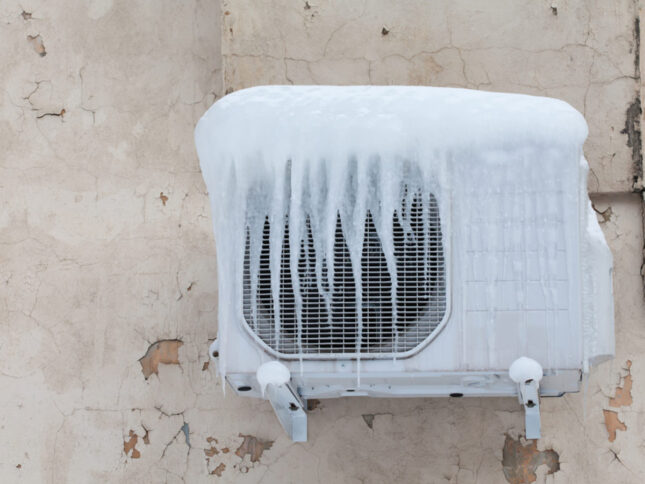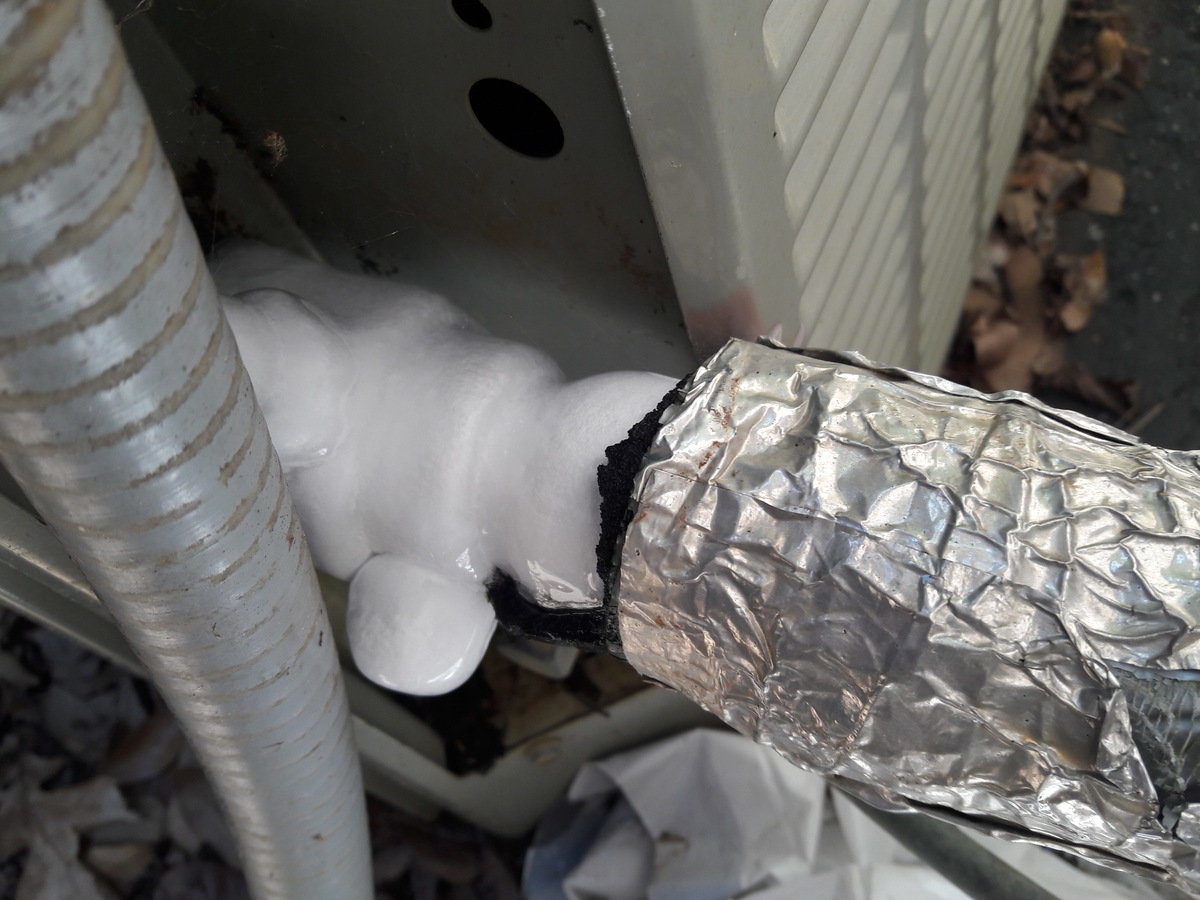What to Handle a Frozen AC Pipe - Critical Steps for Recovery
What to Handle a Frozen AC Pipe - Critical Steps for Recovery
Blog Article
The content down below in relation to What Causes AC Pipes To Freeze? is totally remarkable. You should take a look.

Intro
Finding that your AC pipeline is frozen can be concerning, specifically during warm summer months when you depend on your air conditioning unit one of the most. Understanding what to do in such a circumstance is important to stop additional damages to your air conditioning system and ensure your convenience indoors.
Comprehending the Causes
Numerous aspects can contribute to the cold of an air conditioning pipeline. Recognizing these causes can help you attend to the issue successfully.
Absence of Airflow
One common source of a frozen a/c pipeline is inadequate air flow. When the air movement over the evaporator coil is limited, it can create the coil to go down below freezing temperature level, leading to ice formation on the pipe.
Reduced Refrigerant Levels
Inadequate cooling agent degrees in your air conditioner system can additionally result in a frozen pipe. Reduced cooling agent degrees can trigger the stress in the system to go down, bring about the cold of dampness on the evaporator coil.
Winter Conditions
In cooler climates, freezing temperatures outside can contribute to the cold of air conditioner pipelines. If your AC unit is not properly insulated or if there are leakages in the ductwork, cool air can infiltrate the system, creating the pipe to freeze.
Dirty Air Filters
Unclean or stopped up air filters can restrict airflow in your air conditioner system, causing numerous issues, including an icy pipeline. It's necessary to change or cleanse your air filters consistently to ensure correct air flow and protect against ice accumulation.
Indications of a Frozen Air Conditioner Pipe
Identifying the indicators of an icy air conditioner pipeline is vital for punctual action.
Minimized Airflow
If you observe a considerable decrease in air movement from your vents, it could show a frozen pipe.
Ice Buildup on the Pipe
Noticeable ice accumulation on the cooling agent line or the evaporator coil is a clear indication of an icy a/c pipe.
Odd Sounds from the Unit
Unusual audios, such as hissing or bubbling, coming from your a/c device can indicate that there's ice existing on the pipeline.
Immediate Actions to Take
When faced with a frozen a/c pipe, it's important to act promptly to stop more damage to your air conditioning system.
Shutting off the a/c
The first step is to turn off your ac system to avoid the system from running and aggravating the concern.
Checking for Blockages
Inspect the location around the interior unit for any type of blockages that might be obstructing air flow, such as furniture or curtains.
Thawing the Pipe
You can use gentle approaches like placing towels soaked in cozy water around the icy pipe to help thaw it slowly.
Safety nets
Taking safety nets can assist avoid future occurrences of an icy air conditioner pipe.
Regular Maintenance Checks
Set up routine maintenance checks with a specialist HVAC specialist to ensure that your AC system is running successfully.
Changing Air Filters
Regularly change or cleanse your air filters to avoid air flow limitations and keep ideal efficiency.
Shielding Exposed Pipes
If your air conditioner pipes are revealed to cool temperatures, think about shielding them to stop freezing during cold weather.
Seeking Professional Help
If DIY methods stop working to settle the issue or if you're uncertain about exactly how to continue, it's best to look for assistance from a qualified HVAC technician.
When DIY Methods Fail
If your attempts to thaw the pipeline or address various other problems are unsuccessful, it's time to contact an expert.
Value of Hiring a Professional HVAC Technician
A certified HVAC service technician has the knowledge and devices essential to diagnose and repair issues with your a/c system securely and properly.
Conclusion
Dealing with an icy AC pipeline can be a frustrating experience, but recognizing just how to respond can aid decrease damages and bring back comfort to your home. By comprehending the reasons, identifying the indicators, and taking prompt action, you can efficiently resolve the issue and avoid future incidents.
What to Do If Your AC Line Is Frozen
Make Sure All Supply and Return Air Vents Are Open
If you notice problems with airflow, the first thing you should do is check your supply and return vents. Supply vents distribute clean, conditioned air throughout your home. As this air becomes stale, it’s pulled into the return vent, where it’s reconditioned before being sent back out through the supply vent.
When these vents are closed, air won’t flow in the home. Before examining your AC, check the vents in every room and ensure they’re all open.
Check for a Dirty Air Filter
Another possible cause of limited airflow is a dirty air filter. Your air conditioner’s filters catch elements you don’t want to breathe in, such as dirt and dust. Over time, filters can become clogged, ultimately blocking air from flowing in and out. The lack of airflow can then cause the entire coil to freeze and will completely restrict any air from moving through it. The AC may need to be powered off for one to two days to allow the coil to thaw after replacing the filter to allow proper functioning of the unit. This debris can also accumulate on your AC’s evaporator coil, requiring a more serious repair. In general, air filters should be cleaned regularly (about every two weeks).
Assess Your Outdoor Unit
In addition to checking your AC, assessing the outdoor unit is a good idea. Also known as the condensing unit, it works with your interior unit to release heat outside. An issue with the outdoor unit can result in rising internal temperatures.
Overgrown Shrubs or Clogged Leaves
From leaves and twigs to shrubs and debris, there’s no shortage of outdoor elements that can accumulate around your condensing unit. When these elements get lodged inside the unit, they can block airflow. Fortunately, removing the blockage can solve the problem.
Sounds of a Broken Fan
Shrubs and leaves aren’t the only things that can impede your outdoor unit’s airflow. If the fan is broken, the unit won’t be able to properly get rid of heat — which means the internal temperature won’t go down. First, make sure the fan is spinning. If it is, check for the following sounds of a broken fan:
Buzzing Rattling Screeching Hissing Clicking Preventative Measures
Nobody wants to deal with a frozen AC line. In addition to causing problems with your air conditioner, they require professional repairs. On the bright side, there are preventative measures you can take to help ensure this issue doesn’t arise in the first place.
https://www.coopergreenteam.com/blog/what-to-do-if-ac-line-frozen

I was shown that article about Have a Frozen AC Line? Here’s How to Fix It through someone on our other web page. I beg you take the opportunity to share this write-up if you liked it. Bless you for your time. Don't forget to check up our website back soon.
Call Today Report this page